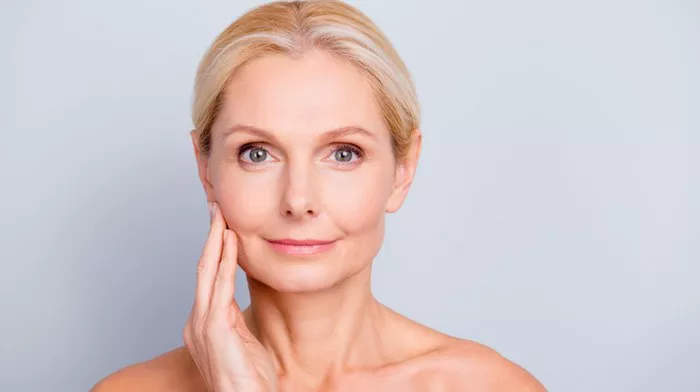Dynamic wrinkles are a common sign of aging that can affect the appearance of the face. These wrinkles are caused by repeated facial expressions, such as smiling, frowning, or squinting, and can become more prominent over time. In this article, we will explore the causes, prevention, and treatment of dynamic wrinkles and provide insights into how to maintain a youthful and vibrant appearance.
What are Dynamic Wrinkles?
Dynamic wrinkles, also known as expression lines, are wrinkles that are caused by repeated facial expressions. These wrinkles are typically found on the forehead, between the eyebrows, and around the eyes and mouth. As we age, our skin loses elasticity, and dynamic wrinkles can become more prominent, making us look older and more tired.
Causes of Dynamic Wrinkles:
The primary cause of dynamic wrinkles is the repeated contraction of facial muscles. Over time, these contractions can cause the skin to lose elasticity and lead to the formation of wrinkles. Other factors that can contribute to the development of dynamic wrinkles include sun exposure, smoking, and poor skincare habits.
Prevention of Dynamic Wrinkles:
While it is impossible to prevent dynamic wrinkles entirely, there are several steps that can be taken to minimize their appearance and delay their onset. These steps include:
Protecting the skin from sun damage: Sun exposure can accelerate the aging process and lead to the formation of wrinkles. It is essential to wear sunscreen and protective clothing when spending time outdoors.
Quitting smoking: Smoking can cause the skin to lose elasticity and lead to the formation of wrinkles. Quitting smoking can help prevent the development of dynamic wrinkles and improve overall skin health.
Maintaining a healthy diet: A diet rich in antioxidants and essential nutrients can help promote healthy skin and delay the onset of dynamic wrinkles.
Establishing a skincare routine: A consistent skincare routine that includes cleansing, moisturizing, and exfoliating can help keep the skin healthy and delay the onset of dynamic wrinkles.
Treatment of Dynamic Wrinkles:
There are several treatment options available for dynamic wrinkles, including:
Botox: Botox is a popular treatment for dynamic wrinkles that involves injecting a small amount of botulinum toxin into the facial muscles. This toxin temporarily paralyzes the muscles, reducing the appearance of wrinkles.
Dermal fillers: Dermal fillers, such as hyaluronic acid, can be injected into the skin to fill in wrinkles and restore volume to the face.
Chemical peels: Chemical peels involve the application of a chemical solution to the skin, which causes the outer layer of skin to peel away, revealing smoother, younger-looking skin.
Laser resurfacing: Laser resurfacing uses a laser to remove the outer layer of skin, stimulating the production of collagen and reducing the appearance of wrinkles.
Conclusion:
Dynamic wrinkles are a common sign of aging that can affect the appearance of the face. While it is impossible to prevent dynamic wrinkles entirely, there are several steps that can be taken to minimize their appearance and delay their onset. Treatment options for dynamic wrinkles include Botox, dermal fillers, chemical peels, and laser resurfacing. By understanding the causes, prevention, and treatment of dynamic wrinkles, individuals can take steps to maintain a youthful and vibrant appearance and feel confident in their own skin.
FAQs
1. Can you get rid of dynamic wrinkles?
Yes, dynamic wrinkles, which are caused by repetitive facial movements like smiling or squinting, can be effectively treated using various cosmetic procedures. Common treatments for dynamic wrinkles include botulinum toxin injections (such as Botox), dermal fillers, laser therapy, and chemical peels. These treatments work by relaxing muscles, replenishing lost volume, or stimulating collagen production to smooth out wrinkles and improve skin texture.
2. What age do you get dynamic wrinkles?
Dynamic wrinkles typically start to become noticeable in your late 20s to early 30s, although the age at which they appear can vary depending on factors such as genetics, sun exposure, and lifestyle habits. Over time, as facial muscles repeatedly contract during facial expressions, dynamic wrinkles like crow’s feet, forehead lines, and frown lines may become more prominent.
3. How long do dynamic wrinkles last?
The duration of dynamic wrinkles varies depending on factors such as skin elasticity, muscle activity, and the severity of the wrinkles. While dynamic wrinkles are temporary and may temporarily improve with treatments like Botox injections, the effects typically last for several months before gradually wearing off. Regular maintenance treatments may be necessary to sustain the results over time.
4. What makes dynamic wrinkles worse?
Several factors can exacerbate dynamic wrinkles, including unprotected sun exposure, smoking, poor skincare habits, and repetitive facial expressions. Exposure to ultraviolet (UV) radiation from the sun accelerates skin aging by breaking down collagen and elastin fibers, leading to the formation of wrinkles. Smoking also contributes to premature aging by reducing blood flow to the skin and depleting essential nutrients. Additionally, making repetitive facial expressions over time can cause lines and creases to become more pronounced, particularly in areas prone to dynamic wrinkles.


